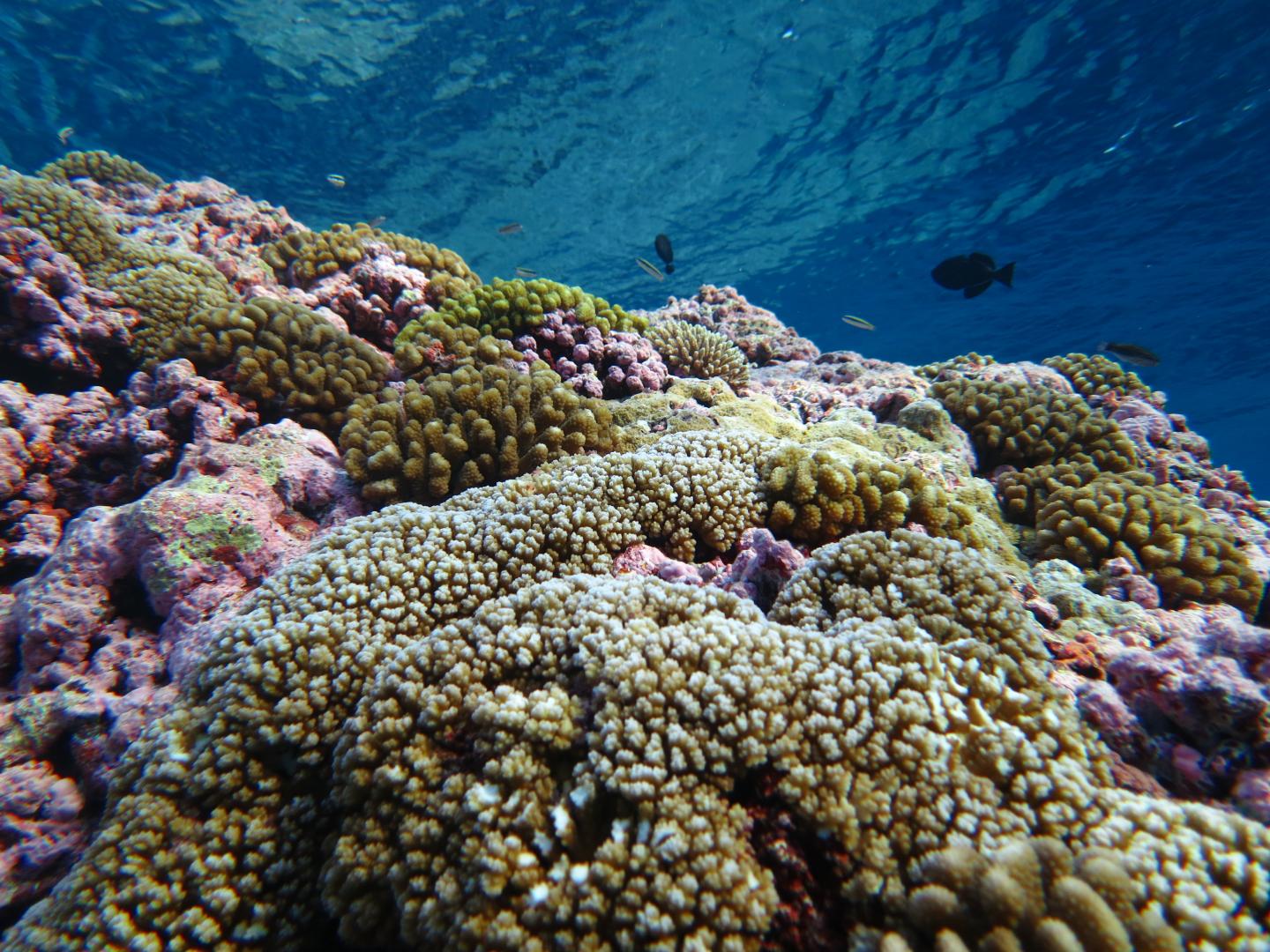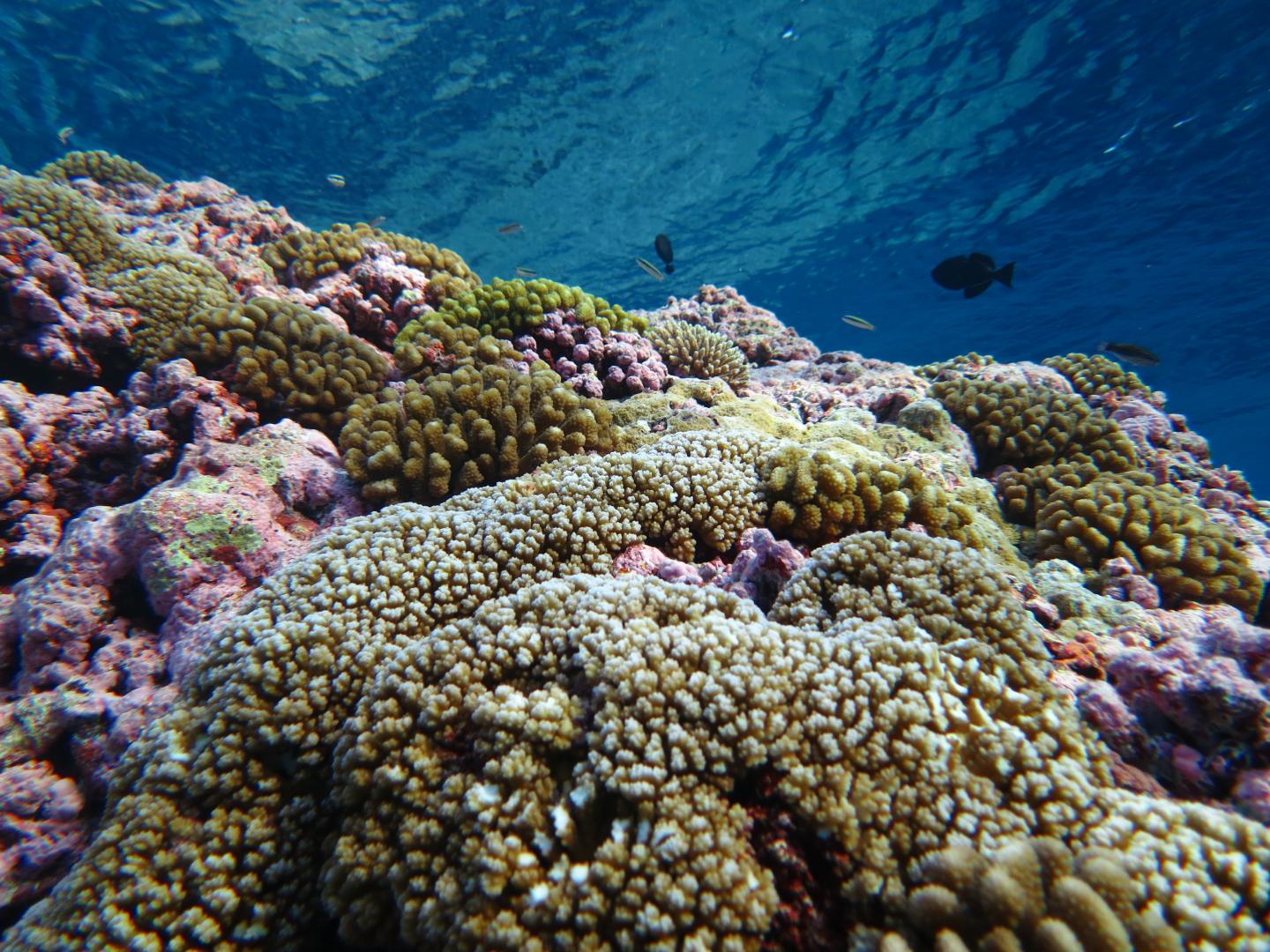
Credit: Mark Vermeij
Coral reefs harbor an incredible diversity of life, both sea creatures we can see and microbial life that we cannot. These organisms generate an enormous number of molecules as they eat food, photosynthesize, reproduce and ward off infections. Researchers have identified several coral reef-derived molecules as having medicinal properties, such as secosteroids, which are steroid compounds used to treat inflammatory disorders; or the chemical compound bryostatin 1, derived from an invertebrate coral reef denizen known as bryozoans and being evaluated as a treatment for Alzheimer's disease.
Yet many thousands more coral reef molecules with medicinal potential are unknown to science. A study led by San Diego State University biologists describes a promising new method for screening the molecular output of reef life for important chemical properties, which could make it much easier to identify the next generation of coral reef-derived drugs and better understand the diversity of molecules found in the ocean.
"We know what so few of these molecules are and what they do," said the paper's lead author, Aaron Hartmann, a postdoctoral biologist with a dual appointment at SDSU and the Smithsonian Institution. "That's a pretty big roadblock to developing therapeutic drugs derived from them."
Hartmann led the study alongside SDSU biologist Forest Rohwer and colleagues from the University of California, San Diego; the National Oceanic and Atmospheric Administration; the European Molecular Biology Laboratory in Heidelberg, Germany; Imperial College London; the CARMABI Foundation Curaçao; the University of Amsterdam, and Bangor University in Wales. Rohwer co-leads the SDSU Viral Information Institute, a world leader in viral ecology research.
Molecular fingerprints
Working with chemist Pieter Dorrestein's laboratory at the Skaggs School of Pharmacy at UC San Diego, the researchers analyzed tissue samples from corals, algae and fungus collected by Rohwer and others on coral reefs near the remote Line Islands in the central Pacific Ocean.They isolated each organism's molecules and sent them through an instrument called a mass spectrometer that measured each molecule's mass. Next, they broke the molecules apart with a laser and measured the masses of those pieces.
Molecules tend to break apart in predictable ways, so by measuring the mass of these chemical pieces, the researchers were able to come up with a set of "molecular fingerprints"–patterns in the chemical profiles that point to the presence of particular molecules.
However, knowing its chemical fingerprint alone can't tell you what a specific molecule does if it hasn't been described before. The database of known molecules represents only a very small fraction of the molecules that exist, Hartmann explained.
To get around that limitation, the researchers next employed an ingenious trick. They used an algorithm created in Dorrestein's lab to screen these molecular fingerprints, and if the chemical makeups of two unknown molecules were similar, they were flagged as related molecules. Hartmann and Daniel Petras, a postdoctoral chemist at UC San Diego, then explored the chemical reactions of these unknown molecules to get a better idea of how they behave.
This analysis helps answer a long-standing mystery in marine biology: Why do coral reefs have such vast molecular diversity? Comparing even very closely related organisms, the researchers discovered each had different molecular fingerprints, suggesting that these organisms can modify the same molecules differently to suit their particular biological niches.
In other words, even closely related organisms might face different health challenges depending on their geographic location, for example, and therefore tweak their molecules just slightly to better defend themselves. The researchers reported their results today in the Proceedings of the National Academy of Sciences.
Potential therapeutic value
"Molecular relatedness can tell you about the potential chemical reactions exhibited by these unknown molecules," Hartmann said. "That, in turn, can tell you something about their potential therapeutic value."
So instead of screening each individual molecule one-by-one to see if it has medicinal properties, this technique would allow drug discovery scientists to easily hunt for chemical properties exhibited by known drugs. These newly discovered molecules might have benefits over known drugs–more potent, for example, or with fewer side effects.
"Using this method, we're not held back by the fact that our molecular database is pretty sparse," Hartmann said. "If you know what chemical reactions are important, you can then go looking for molecules with those properties."
###
This research was was funded by the National Science Foundation, the Gordon and Betty Moore Foundation, the National Institutes of Health, the European Union and the German Research Foundation
Media Contact
Michael Price
[email protected]
@SDSU
http://www.sdsu.edu
Original Source
https://newscenter.sdsu.edu/sdsu_newscenter/news_story.aspx?sid=76960 http://dx.doi.org/10.1073/pnas.1710248114




